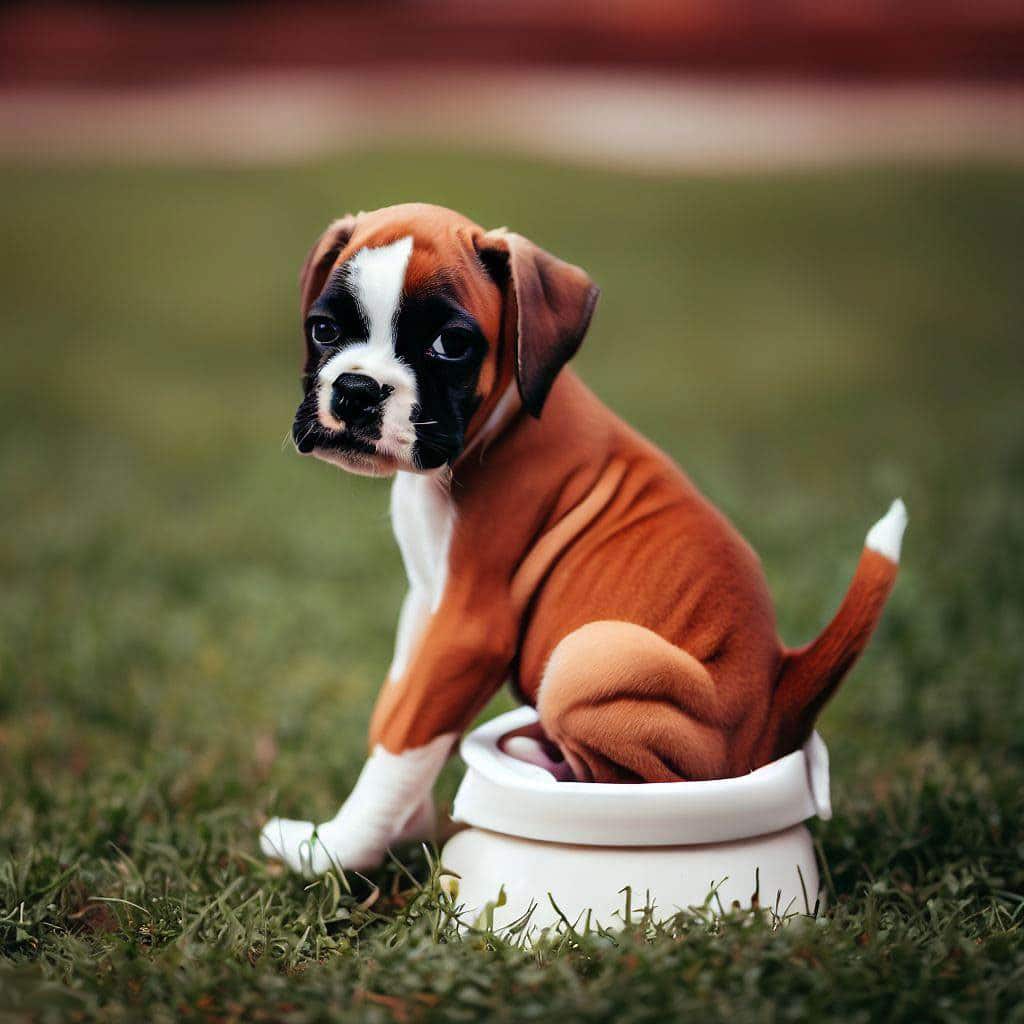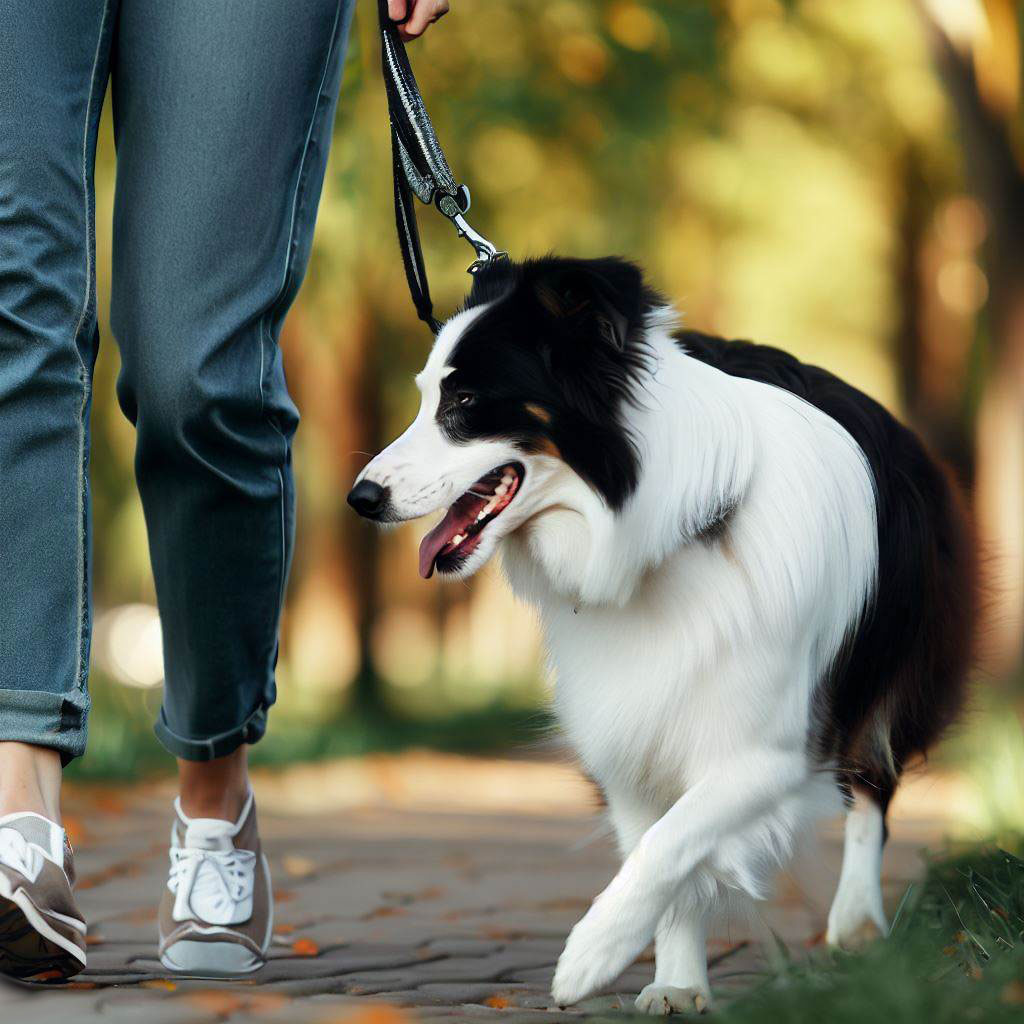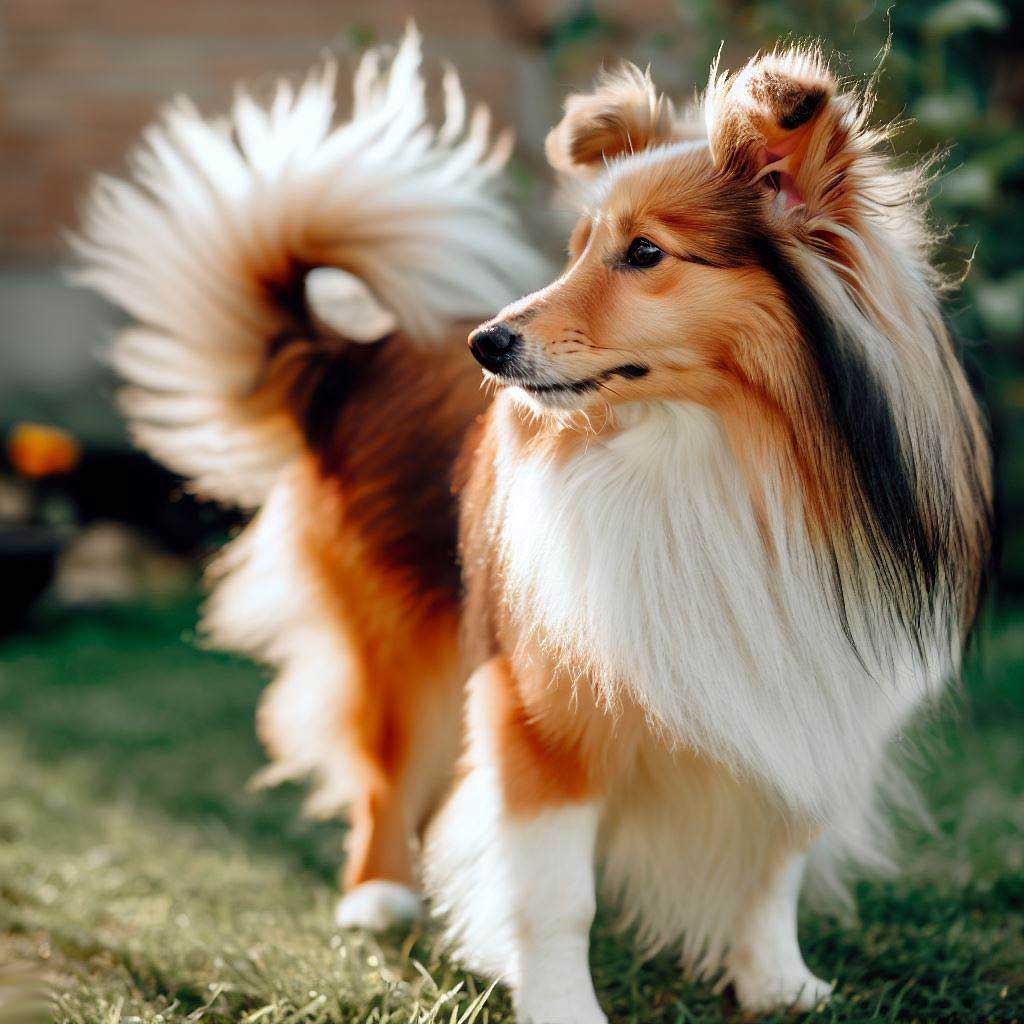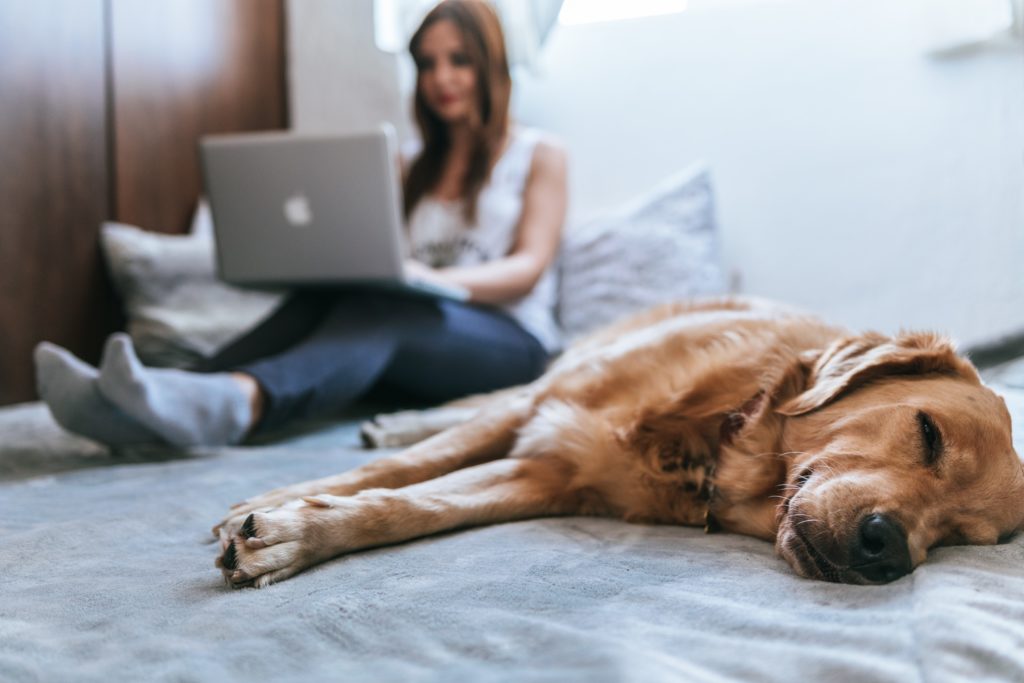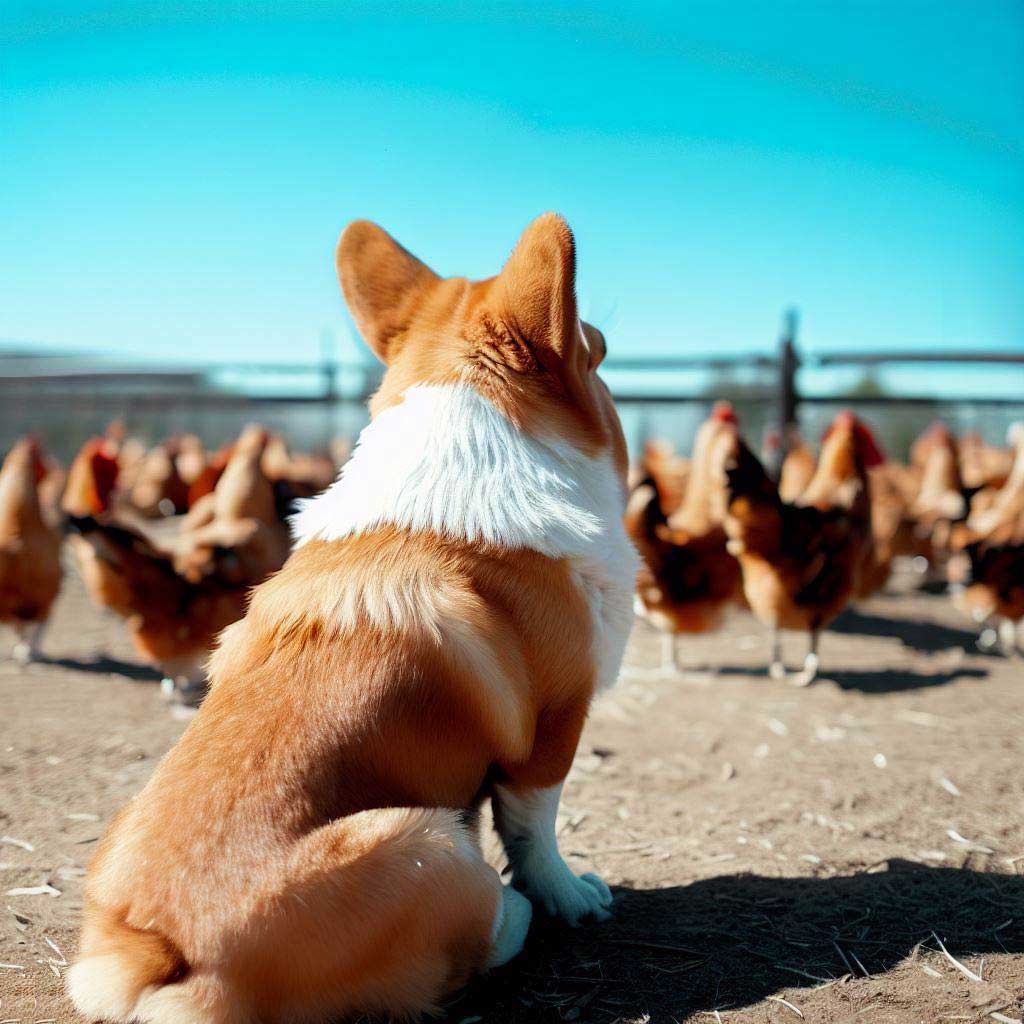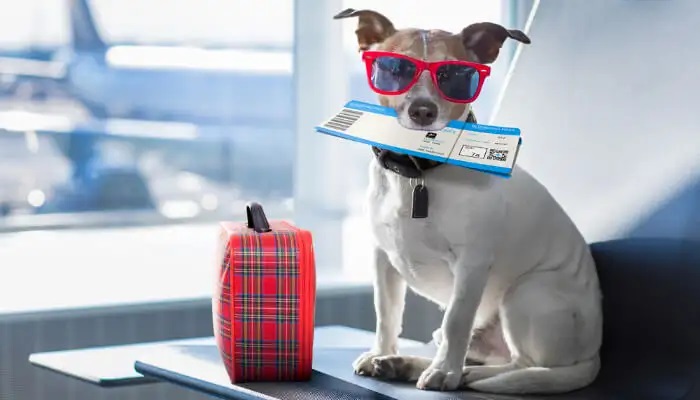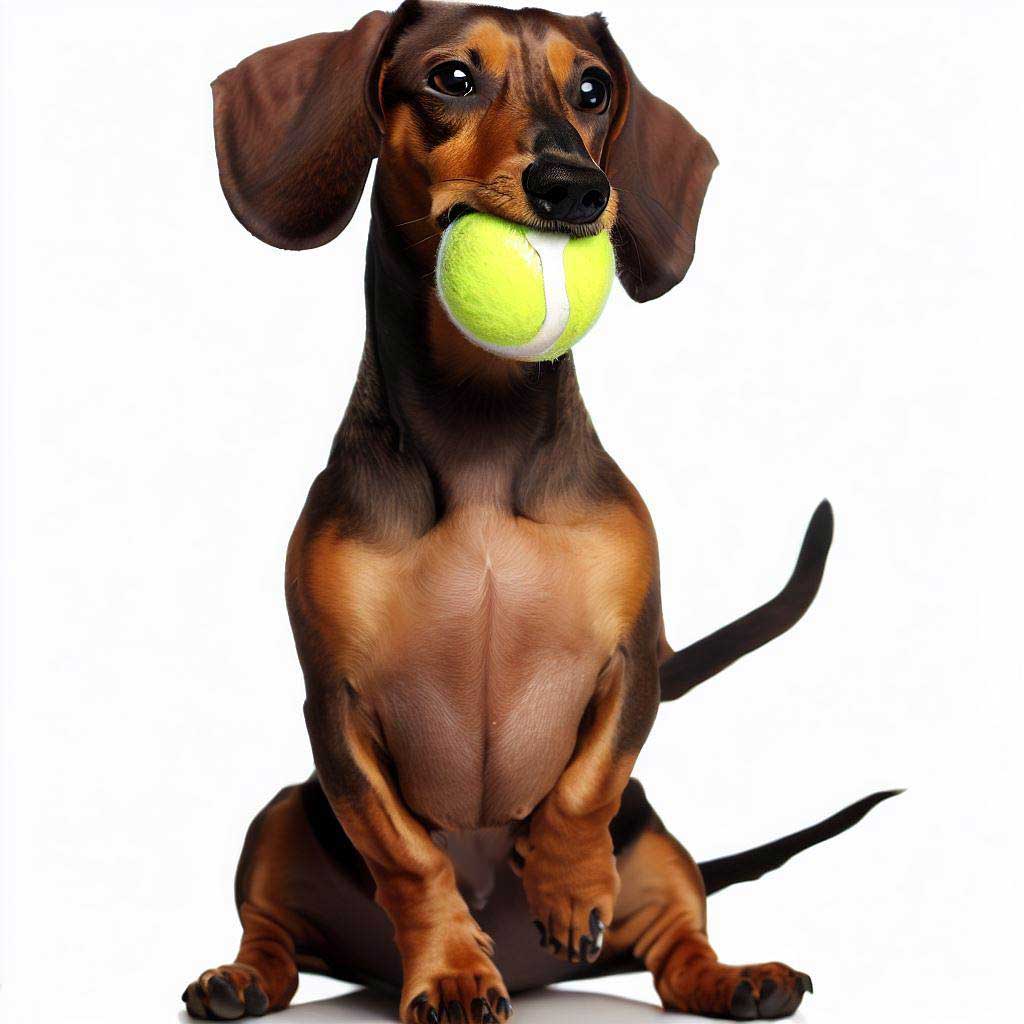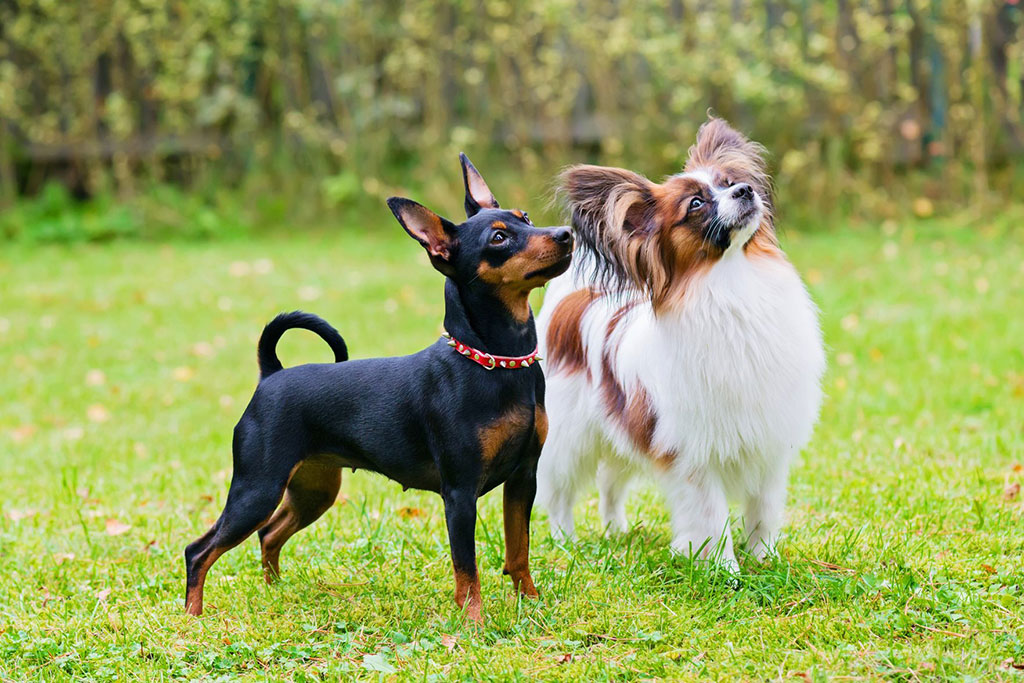What Do I Need To Know To Potty Train A Stubborn Puppy?
The process of potty training can seem very daunting. Especially if you have a more headstrong puppy.
Table of Contents
Introduction: How to Potty Train a Stubborn Puppy
Welcome to the ultimate guide on how to potty train a stubborn puppy. Here, we’ll explore everything you need to know about this sometimes challenging, but rewarding, journey.
The process of potty training can seem very daunting. Especially if you have a more headstrong puppy, but rest assured, with patience, consistency, and the right strategies, you can guide your furry friend to success.
Overview of the Potty Training Process
Potty training is a crucial part of bringing a new puppy into your home. Understanding the steps involved can help make the journey smoother for both of you. It’s not just about teaching your puppy where to go; it’s about building a bond of trust and mutual understanding.
The process starts with setting up a consistent routine, which includes feeding times, potty breaks, playtimes, and rest periods. Puppies thrive on routine and it helps them to learn faster.
The next step is to choose a designated potty spot. This could be a specific corner of your yard or a particular type of puppy pad in your home.
Consistency is key in this process, always directing your puppy to this same spot will teach them where you want them to go.
Each time your puppy successfully does their business at the designated spot, you’ll want to reward them with praise and a small treat.
This positive reinforcement will encourage them to repeat the behavior. But remember, accidents will happen, and it’s important to handle these with patience and understanding. Punishment does not aid in potty training; in fact, it can often hinder progress by creating fear or confusion.
Why Some Puppies Can be Stubborn During Potty Training
If you’ve ever wondered how to potty train a stubborn puppy, you’re not alone. Many pet parents encounter resistance during this process.
Puppies, much like people, have their unique personalities. Some are eager to please and catch on quickly, while others may test boundaries and require more patience and perseverance.
Stubbornness in puppies can stem from various reasons. For one, your puppy may not yet fully understand what you expect of them.
Puppies are not born knowing where they should and shouldn’t relieve themselves. This is a learned behavior, and some puppies may take longer to grasp this concept than others.
A puppy might also appear stubborn if they’re not motivated by the rewards you’re offering. Each puppy has its preferred type of reward.
For some, it might be a certain type of treat, for others, a fun toy, and some might value praise and affection above all else. Finding what motivates your puppy can be a game-changer in your training process.
Lastly, underlying medical conditions can also lead to perceived stubbornness. If your puppy seems to be struggling with potty training despite your best efforts, it may be worth consulting with a vet to rule out any health issues.
In this guide, we’ll delve into these topics and more, providing you with expert advice on how to potty train a stubborn puppy.
Regardless of how stubborn your puppy may seem, remember that patience, consistency, and love are the best tools you have on this journey.
Understanding Puppy Development
Understanding your puppy’s development is essential in setting appropriate expectations and effectively training your new pet.
Stages of Puppy Development
Puppies undergo various developmental stages from birth until they mature into adult dogs, each with its unique traits and milestones. Here are the most crucial stages to understand:
- Neonatal Period (0-2 weeks): Newborn puppies are completely dependent on their mother. They can’t see or hear but can touch and taste. They spend most of their time sleeping and eating, and their mother stimulates them to eliminate.
- Transitional Period (2-4 weeks): During this stage, puppies start to see, hear, and walk. They also begin to explore their environment. While they start to gain some independence, their mother continues to play a significant role in their development.
- Socialization Period (4-12 weeks): This is a critical period in a puppy’s development, where they start to learn about their environment and interact with other animals and people. Around 8-12 weeks, they also begin to understand that they can control their bowel and bladder movements, making it an ideal time to start potty training.
- Juvenile Period (12 weeks to maturity): During this stage, puppies continue to learn about their world and how to interact with it. They have more control over their bladder and bowels, making it a prime time for potty training, especially for stubborn puppies that might need more time to understand the concept.
Development and Potty Training
Age and development play significant roles in how to potty train a stubborn puppy. For instance, during the socialization period, exposing your puppy to the concept of a designated potty spot can begin to instill the idea. However, it’s crucial to remember that each puppy will develop at their own pace, and patience is key.
Also, consider the puppy’s attention span. Young puppies have shorter attention spans and may become easily distracted during training. As they age and their attention span lengthens, they will be more capable of understanding and remembering the lessons.
Understanding these stages will help you tailor your potty training techniques to your puppy’s development level, leading to a more effective and less stressful process for both of you.
The Role of Age in Potty Training
Puppies are born without control over their bladder and bowel movements. It isn’t until they’re about 12-16 weeks old that they gain the ability to control these functions. This is typically the optimal age to begin potty training, as puppies younger than this won’t physically be able to hold it in, which could lead to frustration for both you and your furry friend.
Understanding your puppy’s age-related abilities can be a game-changer in your potty training journey. As a rule of thumb, a puppy can hold its bladder for as many hours as they are months old, plus one. For instance, a three-month-old puppy should be able to hold it for about four hours. This can be useful in determining how frequently your puppy needs to go outside for potty breaks. However, remember that all puppies are unique, and some may need more frequent breaks, especially during the early stages of training.
Unique Challenges of Training a Stubborn Puppy
Learning how to potty train a stubborn puppy presents its own unique challenges. What works for one puppy may not work for another, especially when dealing with a stubborn one.
For instance, a stubborn puppy might resist your potty training efforts by refusing to go when you take them outside. Only to have an accident literally moments after you come back in. Or they might consistently go to the bathroom in forbidden areas despite being frequently taken to their designated potty spot. These behaviors can be exasperating, but don’t despair. Stubborn puppies require a bit more patience and creativity, but they can certainly be potty trained successfully.
To overcome these challenges, consider implementing reward-based training, using treats or toys that your puppy particularly enjoys. You might also need to adjust your routine a little. Give your puppy more frequent opportunities to go outside, or spend a bit more time outside with them to ensure they go before you come back in.
Remember, the process of learning how to potty train a stubborn puppy is as much about understanding their unique personality as it is about teaching them where to go. Observing your puppy’s behavior, learning their signals, and adapting your strategies to fit their specific needs and quirks is key. Get this right and you can go a long way in making potty training a successful and rewarding experience for both of you.
Rest assured, with the right knowledge and a lot of patience, you’ll be able to navigate the hurdles of potty training your stubborn puppy, leading to a happier and cleaner home environment.
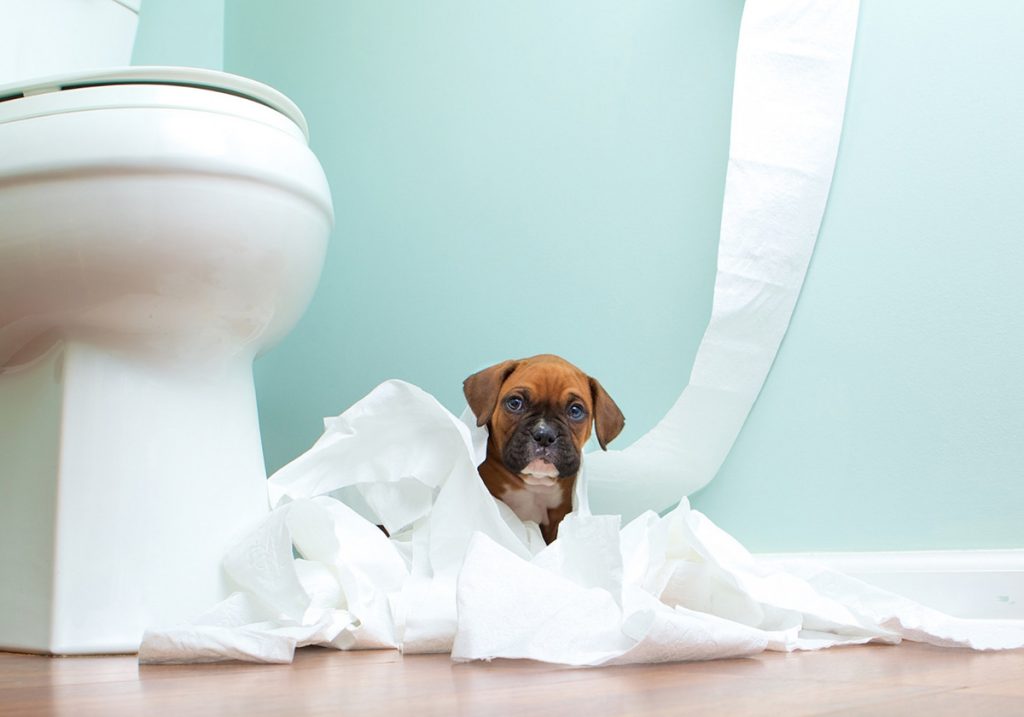
The Importance of Consistency in Potty Training
Consistency is the backbone of learning how to potty train a stubborn puppy effectively. Establishing a predictable routine gives your puppy a sense of security and allows them to understand what is expected of them.
Scheduling Feeding and Potty Breaks
Establishing a consistent feeding schedule is a crucial step in potty training. Puppies typically need to eliminate 15-30 minutes after eating. Therefore, feeding your puppy at the same times each day will naturally lead to predictable times when they need to go outside. It’s recommended to feed puppies 3-4 times a day, breaking up their food into smaller, manageable meals.
Just as importantly, regular potty breaks scheduled around these feeding times can dramatically improve your success. If your puppy is younger than six months, they’ll likely need a potty break every one to three hours. Older puppies can usually hold it in for longer, but should still be given ample opportunities to go outside throughout the day.
But don’t just rely on scheduled breaks; puppies also need to go out after waking up from a nap, during and after playtime, and before bed. By consistently taking your puppy outside during these times, you’ll help them understand the right time and place for elimination.
How Consistency Leads to Success in Potty Training
The key to understanding how to potty train a stubborn puppy lies in consistency. By sticking to a routine, you’re providing clear guidelines for your puppy. With time, they’ll start associating specific times and activities with the need to eliminate, making the potty training process smoother.
Even stubborn puppies, who may take longer to pick up on these cues, will eventually fall into the rhythm of the routine. Consistency not only teaches them where and when to go but also gives them the confidence and comfort of knowing what’s expected of them.
Remember, however, that consistency should also extend to the rewards you give your puppy for successful potty breaks. Always be sure to immediately praise them and offer a treat or toy. This reinforces the positive behavior and encourages them to repeat it.
Learning how to potty train a stubborn puppy can be challenging, but with a consistent routine of feeding times and potty breaks, you’ll set yourself—and your puppy—up for success.
Essential Potty Training Tools
Successfully learning how to potty train a stubborn puppy often involves a few key tools. These tools can make the process smoother and more understandable for your puppy, reducing stress for both of you. Let’s delve into two essential tools: puppy pads and crates.
Harnessing the Power of Puppy Pads
Puppy pads are absorbent, disposable cloths that can be a powerful tool in the potty training process. They’re particularly useful for those times when you can’t immediately take your puppy outside. They’re especially handy during the night or if you live in a high-rise building.
To use puppy pads, consistently place them in the same area. Each time your puppy goes to the bathroom on the pad, reward them with praise or a treat. This helps them understand that the pad is an acceptable place to eliminate. Over time, you can gradually move the pad closer to the door, and eventually outside, easing your puppy into outdoor bathroom habits.
However, be aware that while puppy pads can be a helpful tool, they can sometimes be confusing. They can confuse puppies who are trying to understand the concept of only going outside. They’re typically best used as a transition tool or for specific circumstances where immediate outdoor access is not possible.
The Role of Crates in Potty Training
Crates can play a significant role when learning how to potty train a stubborn puppy. Dogs naturally avoid soiling their sleeping areas, so a crate can help teach your puppy bladder and bowel control. The crate should be big enough for your puppy to stand, turn around, and lie down, but not so big that they could use one corner as a bathroom.
Consistently crating your puppy when you can’t supervise them prevents accidents around the house and keeps them safe. Remember to let them out for regular bathroom breaks and don’t use the crate as a punishment. Your puppy should see their crate as a safe and comfortable space.
Combining the use of puppy pads and crates can greatly enhance your potty training strategy, And when dealing with a really stubborn puppy they can work miracles. Remember, every puppy is unique, and finding the right balance of tools and methods is key to successful potty training.
Practical Potty Training Techniques for Stubborn Puppies
Understanding how to potty train a stubborn puppy can be a bit of a puzzle. Each puppy is unique, and what works for one might not work for another. However, there are some universally effective techniques you can employ. Let’s discuss rewards-based potty training, the bell method, and the principle of confinement and supervision.
Rewards-Based Potty Training: How and Why it Works
Rewards-based potty training is an essential part of learning how to potty train a stubborn puppy. It’s based on the principle that behaviors followed by pleasant consequences are likely to be repeated. Each time your puppy successfully uses their potty area, you should immediately reward them with praise, a treat, or a favorite toy.
Over time, your puppy will associate going potty in the right place with positive outcomes, encouraging them to repeat this behavior.
The key to success with rewards-based potty training is consistency and timing. The reward should be given immediately after your puppy goes to the bathroom, not after they come back inside or move to a different activity. This helps your puppy understand exactly what action is being rewarded.
The Bell Method: Training Your Puppy to Signal Potty Time
The bell method is an innovative technique that empowers your puppy to communicate when they need to go out. This method involves training your puppy to ring a bell you hang near the door when they need to go outside.
Start by encouraging your puppy to interact with the bell, then reward them with praise and a treat. Once your puppy is comfortable touching the bell, only give them a reward when they ring it just before you open the door to go outside for a potty break. With consistency and patience, your puppy will learn to associate the bell ringing with going outside to potty.
This method requires lots of patience (and persistence) and can be a bit advanced for some puppies, so don’t feel discouraged if it takes some time for your stubborn puppy to catch on. Master this with your puppy and the result will be a clear communication line between you and your beloved pooch – and well worth the effort.
Confinement and Supervision: Balance for Effective Training
When learning how to potty train a stubborn puppy, a balanced approach to confinement and supervision can be incredibly effective. The goal is to supervise your puppy closely when they’re free in your home and confine them in a puppy-friendly area, like a crate or playpen, when you can’t supervise them directly.
Supervision is crucial to catch your puppy in the act if they start to go in the wrong place. A gentle interruption can redirect them to the right spot, where you can then reward them. Confinement, on the other hand, helps prevent accidents when you’re unable to watch them, and it reinforces the natural instinct to not soil their sleeping area.
Incorporating these techniques—rewards-based potty training, the bell method, and balanced confinement and supervision—will equip you with a comprehensive strategy for tackling the task of potty training your stubborn puppy. Remember, patience and consistency are your best allies in this journey. With time, your puppy will understand what’s expected of them, leading to a happier home for everyone involved.
Handling Potty Training Accidents
Despite our best efforts to understand how to potty train a stubborn puppy, accidents are bound to happen. They’re a natural part of the learning process and should be treated as such. Let’s explore why punishments don’t work and how to properly clean up to prevent future accidents.
Why Punishments Don’t Work
It might be tempting to scold your puppy when they have an accident, but this method is not only ineffective; it can also be detrimental. Puppies don’t understand the concept of punishment. If they’re scolded or punished after the fact, they’re likely to become confused or anxious rather than associating the punishment with their actions.
Moreover, negative reactions can make a stubborn puppy even more resistant to learning. Rather than understanding that they shouldn’t poo or wee indoors, they might start to associate going to the bathroom in your presence with punishment and start hiding from you to do their business. This makes the potty training process even more challenging.
The key to successful potty training is patience, understanding, and positive reinforcement. Instead of punishing your puppy for accidents, interrupt them calmly if you catch them in the act, and redirect them to their potty area. Then, reward them when they get it right.
Proper Cleanup Techniques to Prevent Future Accidents
Cleaning up after your puppy’s accidents properly is crucial to prevent future incidents. Puppies have a keen sense of smell, and if any odor from their waste remains, they may be drawn back to the same spot to go again.
To properly clean up, blot the area with an absorbent material to soak up as much as possible, then use an enzymatic cleaner specifically designed to break down pet waste odors. This type of cleaner is key, as regular household cleaners often can’t fully eliminate the smell. Make sure to follow the instructions on the cleaner bottle label for the best results.
In conclusion, learning how to potty train a stubborn puppy involves patience, understanding, and a thoughtful approach to inevitable accidents.
Remember, your reaction to these incidents can significantly influence your puppy’s learning process, so stay calm and keep an effective enzymatic cleaner on hand.
Dealing with Stubbornness: Special Tips and Tricks
One of the challenges when you’re figuring out how to potty train a stubborn puppy is dealing with their persistent willfulness. Stubborn puppies can make the potty training process seem daunting, but with a keen understanding of their body language and a good measure of patience and persistence, you can certainly overcome this hurdle.
Understanding Your Puppy’s Body Language
Learning to interpret your puppy’s body language is essential in the potty training process. Puppies often display distinct signals when they need to eliminate. These can include sniffing the ground, circling, whining, scratching at the door, or attempting to sneak away to a quiet area.
Knowing how to read these signs can provide you with timely opportunities to guide your puppy to their designated potty area, which will reduce the likelihood of accidents. As you become more attuned to your puppy’s body language, you’ll also build a stronger bond with them, which can make training in general more effective.
Remember, every puppy is unique, so their signals might not be textbook. Spend quality time observing your puppy to understand their specific signals and respond effectively. This is an integral part of the process of learning how to potty train a stubborn puppy.
How Patience and Persistence Can Overcome Stubbornness
Patience and persistence are the secret weapons in your arsenal when dealing with a stubborn puppy. Potty training is a process of habit formation, and like all habits, it takes time to become ingrained. Your stubborn puppy will need consistent, repetitive experiences to learn where and when to do their business.
Patience comes into play when accidents inevitably occur. As we have mentioned previously, reacting with frustration or anger can confuse and scare your puppy, making the process harder. Instead, calmly redirect your puppy and clean up the mess without fuss. Your calm and patient attitude will create a more positive learning environment for your puppy.
Persistence is equally important. Consistency in your training routine will reinforce the correct behaviors. Keep regular feeding and potty schedules, use consistent command words, and reward your puppy for doing right. Eventually, your persistence will pay off, and your stubborn puppy will get the hang of potty training.
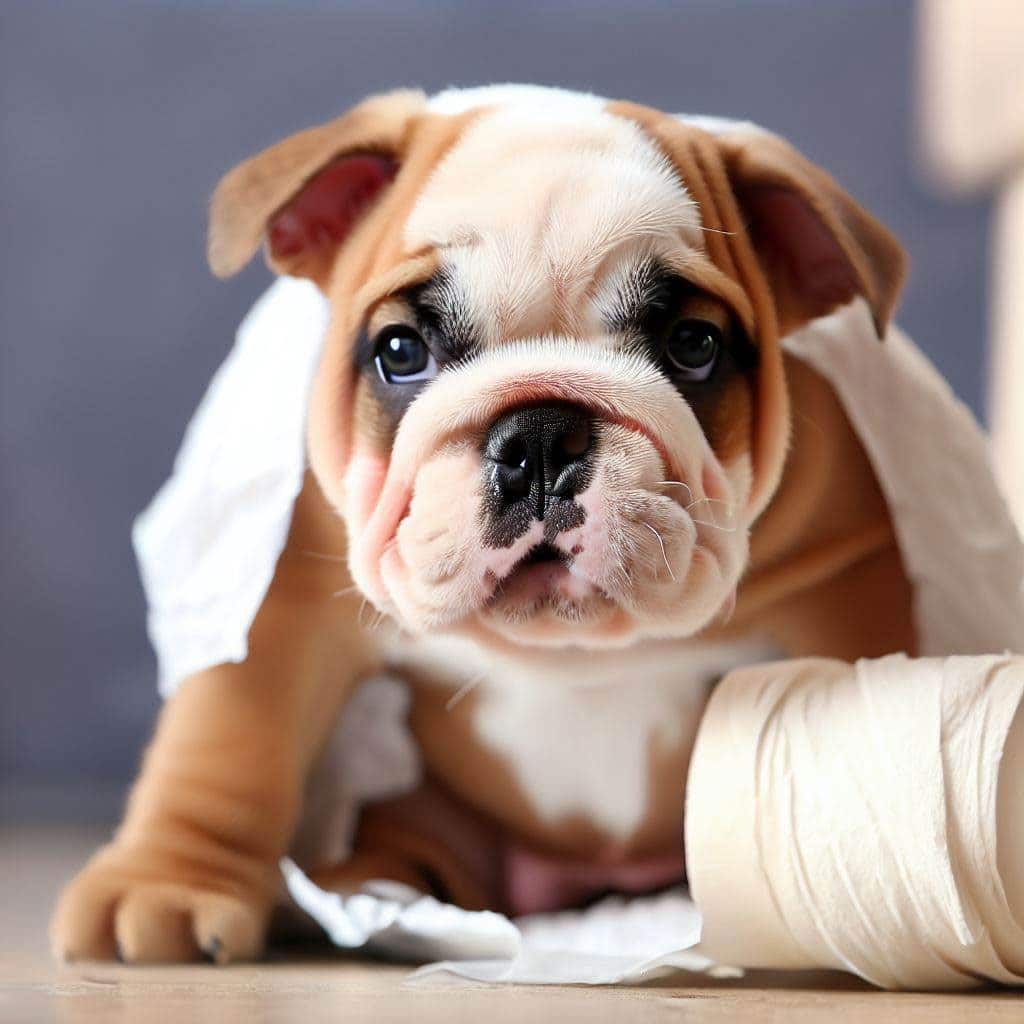
Potential Health Issues that May Affect Potty Training
As you navigate the path of learning how to potty train a stubborn puppy, it’s important to be aware that certain health issues can affect the process. Not all challenges in potty training are due to a puppy’s stubbornness. Some could be indicators of underlying health problems that require attention.
When to Consult a Veterinarian
If your puppy is having frequent accidents, consuming more water than usual, or if their stool appears unusual (for example, too loose, too hard, or contains blood), it’s time to consult a veterinarian. These could be signs of urinary tract infections, kidney diseases, or gastrointestinal problems.
Moreover, puppies with severe separation anxiety may also have accidents. This anxiety can sometimes be so severe that it manifests as physical symptoms. If your puppy only seems to have accidents when you’re not around, despite being generally well-trained, it might be time to seek advice from a vet or a professional animal behaviorist.
Remember, sudden changes in your puppy’s potty behavior are often a call for immediate consultation with a vet. Early detection and treatment of potential health issues can save you and your pet a lot of discomfort.
How Health Issues Can Impact Potty Training
Certain health problems can indeed impact the process of potty training. For instance, a urinary tract infection can make your puppy feel an urgent need to urinate frequently, causing unavoidable accidents. Digestive problems can lead to diarrhea or constipation, which can disrupt regular potty schedules and create difficulties in training.
Furthermore, some puppies might have congenital conditions, such as ectopic ureter, leading to urinary incontinence. In these cases, even the most effective training strategies on how to potty train a stubborn puppy might fall short without appropriate medical intervention.
Therefore, while consistency, patience, and positive reinforcement are crucial in potty training, we mustn’t overlook the role that good health plays in this process. By maintaining an open dialogue with your veterinarian and staying alert to potential health issues, you can ensure that your puppy’s journey to being potty trained is a smooth one.
Success Stories: How to Potty Train a Stubborn Puppy
One of the most encouraging aspects when learning how to potty train a stubborn puppy is hearing success stories from fellow pet owners. These tales of triumph not only provide inspiration but also offer practical strategies that have proven to work. Let’s dive into a couple of these real-life cases.
Inspiration from Successful Pet Owners
Meet Jake, a dachshund renowned for his stubborn streak. His owner, Lisa, spent countless hours trying to potty train him, but the progress seemed slow. She employed the essential potty training tools we discussed earlier, used rewards, and maintained consistent schedules, but Jake was still having more accidents than she’d liked.
Feeling disheartened, Lisa decided to reach out to a professional dog trainer. Together, they revised her approach.
The trainer suggested she use the bell method to help Jake communicate his needs more effectively. Over several weeks, they worked on this new technique, and Lisa began to see improvement. Jake started ringing the bell whenever he needed to go outside, leading to fewer accidents. It was a significant breakthrough in their potty training journey.
The Journey from Stubbornness to a Fully Potty Trained Puppy
Another inspiring story is that of Bella, a vivacious French Bulldog, who could be as stubborn as she was cute. Her owner, David, started to despair when Bella’s accidents continued despite his best efforts at potty training.
David understood that stubborn puppies often require more patience and persistence. He decided to ramp up the consistency of their routine and invested more time in understanding Bella’s body language.
After several weeks of consistent, patient training and supervision, David started to see positive results. Bella started to show clear signals when she needed a potty break, and her accidents drastically reduced.
Today, Bella is fully potty-trained and happier than ever.
These stories remind us that knowing how to potty train a stubborn puppy is a journey, often filled with challenges, but ultimately rewarding. By staying patient, consistent, and willing to learn, success is entirely achievable!
Conclusion: How to Potty Train a Stubborn Puppy
As we wrap up our comprehensive guide on how to potty train a stubborn puppy, let’s quickly recap the key points we’ve covered.
Potty training is a multifaceted process that requires understanding your puppy’s development, staying consistent with feeding and potty breaks, and using essential training tools like puppy pads and crates effectively.
Practical techniques, such as rewards-based training, the bell method, and the right balance of confinement and supervision, can significantly impact your puppy’s potty training progress.
Remember that accidents will happen, but how you handle them—cleaning up properly and avoiding punishment—can set the tone for future success.
Be Observant
Always keep an eye out for any health issues that may impact potty training, and don’t hesitate to consult a vet if you notice anything unusual. At times, stubbornness could be a sign of an underlying problem, and early detection is crucial.
Drawing inspiration from successful pet owners and real-life cases can motivate you through this journey. It might seem tough, but remember the stories of Jake and Bella—stubborn puppies who are now fully potty trained.
As you embark or continue on this journey of understanding how to potty train a stubborn puppy, remember that patience, consistency, and understanding are your best tools.
Every puppy is unique, and while the journey might be a bit harder with a stubborn puppy, it is undoubtedly rewarding. Stay the course, and you and your puppy will enjoy the benefits of a well-executed potty training plan. Good luck, and happy training!
FAQ: How to Potty Train a Stubborn Puppy
When it comes to understanding how to potty train a stubborn puppy, certain questions often come to the fore. Two of the most frequently asked ones include “How long should potty training take?” and “What if my puppy isn’t progressing?” Let’s address these concerns.
How Long Should Potty Training Take?
The timeline for potty training can vary widely between puppies. It largely depends on your puppy’s age, breed, health, and of course, their individual temperament. Most puppies can start potty training when they’re about 12 weeks old, as this is when they gain better control of their bladder and bowel movements.
On average, it can take four to six months for a puppy to be fully house trained. But for some, especially stubborn puppies, it might take up to a year. Patience and consistency are key here. Don’t be disheartened if your puppy seems to be taking longer than others. As long as you’re consistent with your training methods, they will eventually get the hang of it.
What If My Puppy Isn’t Progressing?
If you’re feeling stuck on how to potty train a stubborn puppy, don’t panic. It’s normal to encounter setbacks in the potty training process, especially with stubborn puppies. There are several steps you can take if your puppy seems to be stagnating.
Firstly, rule out any medical issues. Problems such as urinary tract infections can interfere with potty training. If your puppy is having more accidents than usual, it might be worthwhile to consult a vet.
Next, reassess your training methods. Are you being consistent with feeding and potty schedules? Are you using positive reinforcement effectively? Sometimes, small adjustments to your training approach can make a big difference.
Finally, consider seeking help from a professional dog trainer. They can provide expert insights and advice, helping you figure out where things are going wrong and how to correct them.
What Can I Do to Minimize Nighttime Accidents?
Nighttime accidents can be a common challenge when learning how to potty train a stubborn puppy. To minimize these, try to limit your puppy’s water intake a couple of hours before bed and make sure to take them out for a bathroom break just before sleep.
You may also need to set alarms for additional potty breaks during the night, especially for younger puppies who have less bladder control. As they grow and their bladder capacity increases, they’ll be able to hold it in for longer periods.
Should I Use a Crate for Potty Training My Puppy?
Yes, crates can be a powerful tool in the potty training process. Dogs naturally avoid eliminating in their immediate sleeping and eating areas, and a crate leverages this instinct to aid in training.
It’s important to make sure the crate is an appropriate size – it should be just big enough for your puppy to stand, turn around, and lay down in. If it’s too big, your puppy may use one end for sleeping and the other for eliminating.
Remember, the crate should always be a safe and comfortable space for your puppy, never a place for punishment.
My Puppy Seems Scared of Going Outside. How Can I Help?
If your puppy appears to be scared of going outside, it’s essential to understand why.
Are they reacting to loud noises, unfamiliar people, or other animals? Once you identify the source of fear, you can gradually help them adjust using positive reinforcement.
For instance, if they’re scared of loud noises, try to desensitize them by gradually exposing them to lower levels of noise while rewarding them for calm behavior.
If they’re scared of unfamiliar people or animals, controlled socialization sessions can help.
Remember, this process requires patience and should never involve forcing your puppy into situations they find distressing. A professional dog trainer or behaviorist can provide further help if needed.
What are the best puppy potty training tips?
Start with consistency in feeding and potty breaks. Reward your puppy when they go in the right spot, and use tools like puppy pads and crates. Understanding your puppy’s body language is essential, and never punish them for accidents. Stay patient, persistent, and consult a professional if needed.
Why is my puppy inconsistent with potty training?
Inconsistency in potty training could stem from a lack of routine, mixed signals, or health issues. Ensure you’re sticking to a regular feeding and potty schedule and reinforcing positive behavior. If the inconsistency persists, consult a veterinarian to rule out underlying health concerns.
How do you potty train a puppy who won’t train?
For a puppy that seems untrainable, evaluate your current techniques. Utilize consistent routines, positive reinforcement, and clear communication. Sometimes, professional help from a dog trainer may be required to uncover and address unique challenges.
How do you potty train a disobedient puppy?
Potty training a disobedient puppy requires understanding the underlying cause of disobedience. Consistent schedules, rewards, and clear communication can help. A professional trainer might be helpful to tailor a training approach to your specific puppy.
How do I stop my stubborn puppy from peeing in the house?
Stopping a stubborn puppy from peeing in the house requires vigilance, understanding their cues, and a consistent routine. Clean any accidents with enzymatic cleaners to remove scents and consult a professional if you find no progress.
At what age is it too late to potty train a puppy?
It’s never too late to potty train a puppy. Older dogs may take more time to unlearn old habits, but with consistency, patience, and possibly professional help, they can be trained.
What is the hardest dog to potty train?
Some breeds like Afghan Hounds, Fox Terriers, or Borzoi might be more challenging to potty train due to their independent or stubborn natures. However, each dog is unique, and with the right approach, any breed can be trained.
My dog is 6 months old and not potty trained, is it too late to train him?
No, it’s not too late. While potty training might be easier when they’re younger, a 6-month-old puppy can still be trained with consistency, patience, and appropriate techniques.
How to get a stubborn dog to pee outside?
Utilize positive reinforcement, like treats and praise, when they pee outside. Maintain a consistent schedule and be patient. Professional training or a tailored approach might be needed for particularly stubborn cases.
How to potty train an untrainable dog?
No dog is truly untrainable. Evaluate your approach, be consistent, utilize positive reinforcement, and don’t hesitate to seek professional help if you feel stuck.
Why are some dogs impossible to potty train?
No dog is impossible to potty train, but some may have underlying health issues, previous trauma, or behavioral challenges. Tailored training approaches, professional help, and patience can overcome these barriers.
How to potty train a dog in 3 days?
Potty training in 3 days is an ambitious goal and may not be achievable for all dogs. However, intensive consistency, supervision, and reward-based training can lead to significant progress in a short time.
Why is it taking so long to potty train my puppy?
Long potty training periods might be due to inconsistency, lack of clear communication, or underlying health issues. Assess your approach and consult a professional if needed.
What is the last resort for dog potty training?
The last resort may be seeking professional help from a certified dog trainer. They can provide specialized techniques tailored to your dog’s unique needs.
My adult dog just soiled an area, do I reprimand him?
Reprimanding for a soiled area won’t be effective. Instead, clean the area properly, reassess your potty training approach, and reinforce positive behavior. Consult a vet if this behavior is new or unexplained.
Do I allocate a bathroom spot in the house for my dog to go to the toilet?
Allocating a specific bathroom spot can help with consistency and clarity for your dog. Whether it’s inside with puppy pads or outside, having a designated bathroom spot can aid in training.
Is an adult dog harder to potty train?
An adult dog may be more set in their ways, but it’s not necessarily harder to potty train them. Consistency, patience, and understanding their specific needs are key.
Does a dog house give a puppy comfort for toilet training?
A dog house itself may not aid in toilet training but can provide a safe and comfortable space for your puppy, contributing to overall well-being and ease of training.
Best way to potty train 2 dogs at once?
Training two dogs simultaneously requires consistent schedules tailored to each dog’s needs and reinforcement of positive behavior. It may be beneficial to work with them separately initially and consult a professional if needed.
